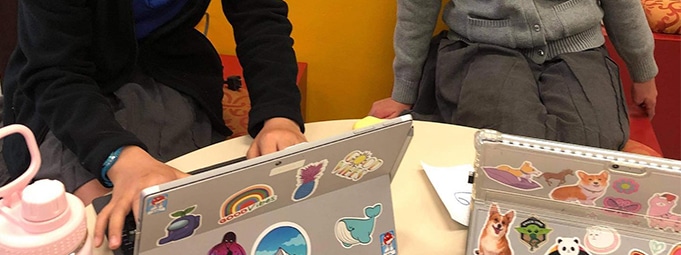
While schools made a quick shift to remote learning over the last year, the focus has not been on security, as we saw with zoombombing early on. The need to emphasize cybersecurity in education is slowly changing as international hacking incidents continue to be uncovered.
But as the progress is slow, the question remains how do we prioritize K-12 cybersecurity? And should cybersecurity be added to the curriculum?
Due to the sudden switch to online platforms, we wanted to raise serious concerns about the potential vulnerabilities in K-12 online education.
Cyberattacks can take shape in many different ways; as institutions are using telecommunication services more than ever we see a steady rise in cyber threats.
Many popular telecommunications firms and providers of managed services and software are targeted for cyberattacks. Since most K-12 education institutions are relying on these services, it leaves them vulnerable to cyberattacks that can disrupt the virtual learning environment and lead to canceled classes.
While education institutions are not always the target, they do feel the repercussions. Thus, schools should invest in online cybersecurity education for both educators and students. This will ensure that schools are prepared to defend themselves from potential cyber threats.
Technology is a major intersection of K-12 psychological and information warfare; which is why it’s important to teach students about cybersecurity.
Our first step is to bring awareness to our students. I introduced The Great Power Competition to illustrate the current events occurring in the world. Additionally, we talked about the complexity of global interactions, past wars or conflicts, important organizations, and how warfare will likely shift in the future.
Students don’t have to wait until they reach their voting age to partake in civic engagement. To reinforce this idea, we discussed ways they can support a strong democracy, locally and globally.
Then, we discuss recommended approaches for how education can be better protected against cyber or invisible threats. Children and educators are handed powerful tools with little knowledge of potential risks or adequate training on the impact of these tools.
Just teaching isn’t enough. An interactive learning experience is what will allow our students to not only process the information but apply it. There are various tools that can be included in the curriculum to support teaching foundational cybersecurity.
From kindergarten, Renton Prep is constantly exploring how we can prepare our students to achieve their full potential in this digital world. We’ve been named one of the top three Middle School STEM programs in America and one of under 40 Microsoft Showcase schools in the United States for a reason.
To learn more about our teaching methods and contact us today, or apply for 2021-2022 enrollment.